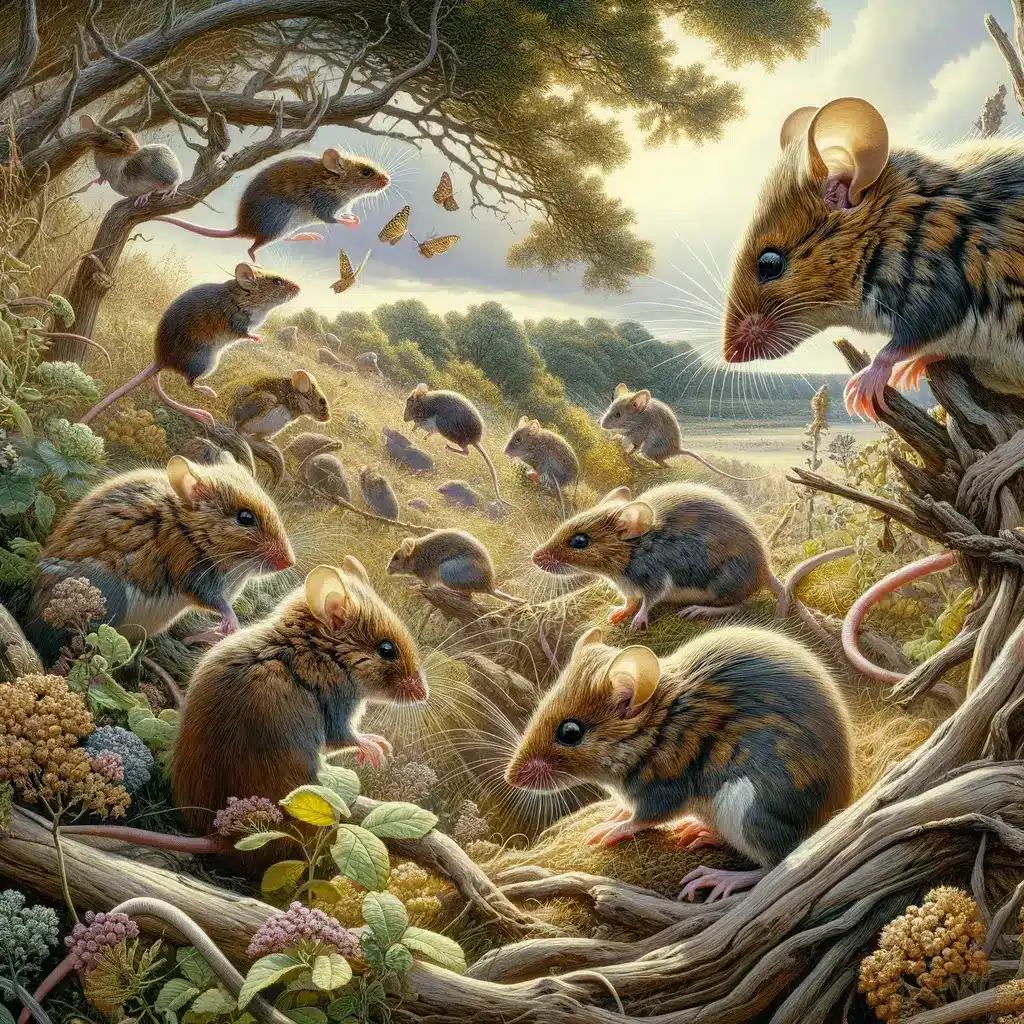Research in field mice under conditions simulating a natural environment reveals the different strategies used by females and males in creating social hierarchies

Like it or not, even in the 21st century, social status affects every aspect of our lives - even our health and life expectancy. This is true for humans, as well as other social creatures. Many studies have been devoted in the last decades to the social relations of a rodent that is particularly popular in laboratories: the mouse. However, as previously shown by Prof. Tali Kimchi From the neuroscience department of the Weizmann Institute of Science and others, housing mice in laboratory conditions for many generations blurs their social instincts and leads, among other things, to a decrease in territorial behavior and competitiveness. If that's not enough, these behavioral studies often only test male mice.
To address these research challenges, Recently checked in Prof. Kimchi's laboratory How are social hierarchies formed among female mice and mice that were bred directly from a species of field mice - those mice that sometimes invade houses or gardens. They did this under conditions as close as possible to those prevailing in their natural environment and came back with surprising findings. The research team, led by Dr. Nega Zilka, Dr. Itzik Sofer, and Dr. Silvia Chvartsman, discovered, among other things, that wild females behave differently from laboratory females: they demonstrated greater aggression in the group and created hierarchies just as rigid as those created by the males . However, this does not mean that males and females used the same tricks to pave their way to the top of the social ladder.
Continuous observation of mice for six days and nights in a vast activity arena that simulates their natural space as much as possible, and careful monitoring of the set of behaviors that indicate social status - from eating and drinking to chasing and running - revealed that males and females establish their hierarchical structure in different ways. If male hierarchies were formed quickly - within a few days - and mainly through chasing and other aggressive actions, it took about four days for the females to clarify who the dominant female was, and where the others were in the social order.
The researchers used the large amount of data they collected to sort the mice according to different "personality structures", according to their behavior patterns. They did this in collaboration with Prof. Uri Alon and Dr. Avi Mayo, from the department of molecular biology of the cell at the institute, who developed an algorithm that enables the analysis of complex biological data sets. The analysis revealed that male mice often tend to be less social than females, and are more likely to show aggression or the opposite: run away and hide. The females, on the other hand, proved to be more complex, aggressive yet social; More than once they took part in an activity of a social nature, such as approaching other mice - and allowing others to approach them.
However, in the end the hierarchies among the two sexes were clear to all members of the group: those at the top of the social ladder, in the middle of the ladder and at the bottom. "Despotic hierarchies", the scientists described them, as the alpha males, or alpha females, took upon themselves the right to expel others from food sources or preferred nesting sites.
Smell and social status
While human hierarchies are thought to rely largely on visual or vocal messages, mice and other mammals secrete pheromones - scent signals that carry social messages. There is no doubt that pheromones play a role in the formation of social hierarchies in mice, but what exactly is the extent and manner of their influence?
To answer this, the researchers used genetic tools that allow blocking the mice's ability to smell the pheromones of other mice, and re-examined how social hierarchies are formed, this time without the ability to pick up social scent signals. The findings largely trumped the cards: in the absence of pheromones, both males and females exhibited aggressive behavior alongside prominent social behavior. Furthermore, the females formed a hierarchy within a day, similar to the pattern found in the males.
The findings in the study also revealed that, contrary to their image, male mice are complex creatures: many studies "exclude" females due to their ovulation cycles, with the assumption that these will cause unnecessary noise in behavior models, but it is precisely the males that are characterized by greater variation in their behavior patterns.
These findings have implications for any research group that uses the mouse as a model for social behavior, but their significance goes beyond this model animal. Dr. Zilka believes that understanding the social behavior of mice in an environment as close as possible to the natural one, may help decipher various aspects of neurobiological disorders with a social context, including autism, Alzheimer's and Parkinson's.
More of the topic in Hayadan:
